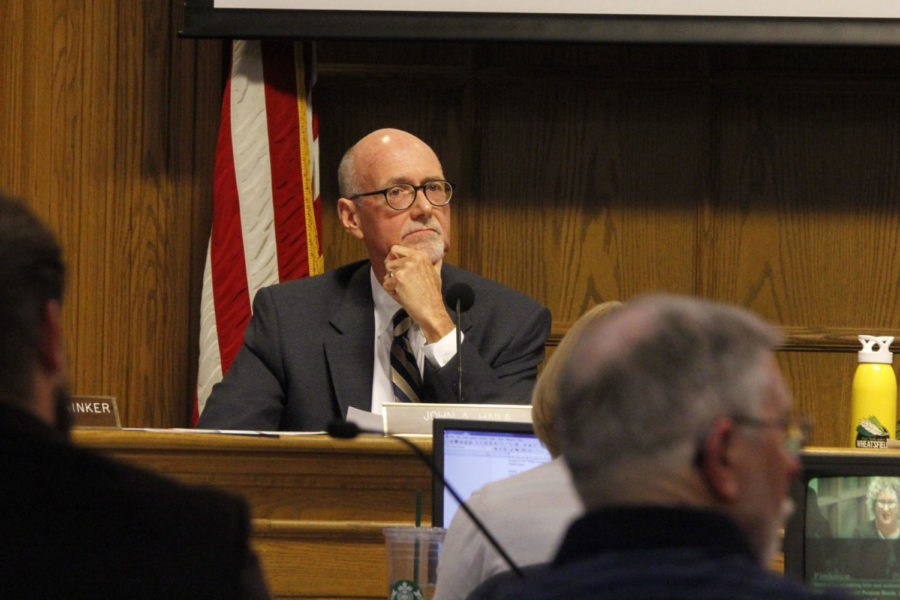City Council to discuss stormwater management
Gillian Holte/Iowa State Daily
Mayor John Haila attends the Aug. 28 Ames City Council meeting.
November 18, 2018
Ames City Council will convene Tuesday to discuss stormwater reconstruction ordinances and evaluate Ames’s progress in the Iowa Nutrient Reduction Strategy (INRS). The meeting will begin at 6 p.m. in the Ames City Council Chambers.
The council has worked to establish different policies regarding stormwater runoffs as part of an effort to manage the quality of water leaving development sites. Five stormwater-related issues are tabled for Tuesday’s meeting, such as parameters for inspection and the size threshold for stormwater management criteria.
It is currently unclear if a development site must undergo regular inspection if the stormwater runoff maintenance was completed by a licensed plumber. Also, any development that takes up one acre of land or has 10,000 square feet of impervious surfaces, like paved parking lots, are subject to the parameters of Ames’s stormwater maintenance ordinance.
The council will also flesh out policies regarding the reconstruction of parking lots, how many runoff curves facilities should allocate for stormwater and when financial security should be established by a landowner for stormwater improvement plans.
The council has conducted numerous workshops and online surveys to analyze public opinion about these issues. Results have been all over the spectrum regarding whether or not the city should change these policies, and feedback has been quite limited. The results of the surveys can be found in these city council documents.
The council is also to discuss an evaluation of the city’s progress concerning the INRS, which was imposed in 2013 with “a primary goal of achieving a 45 percent reduction in nitrogen and phosphorus loads discharged into Iowa waterways,” the Daily reported in 2017.
The council will discuss the city’s progress so far, and how Ames can continue to comply with the INRS moving forward. Nitrogen and phosphorus runoff into streams, creeks and rivers has devastating effects on marine life. A large dead zone exists at the Mississippi River Delta in the Gulf of Mexico and is known as an extreme threat to biodiversity in the area.







